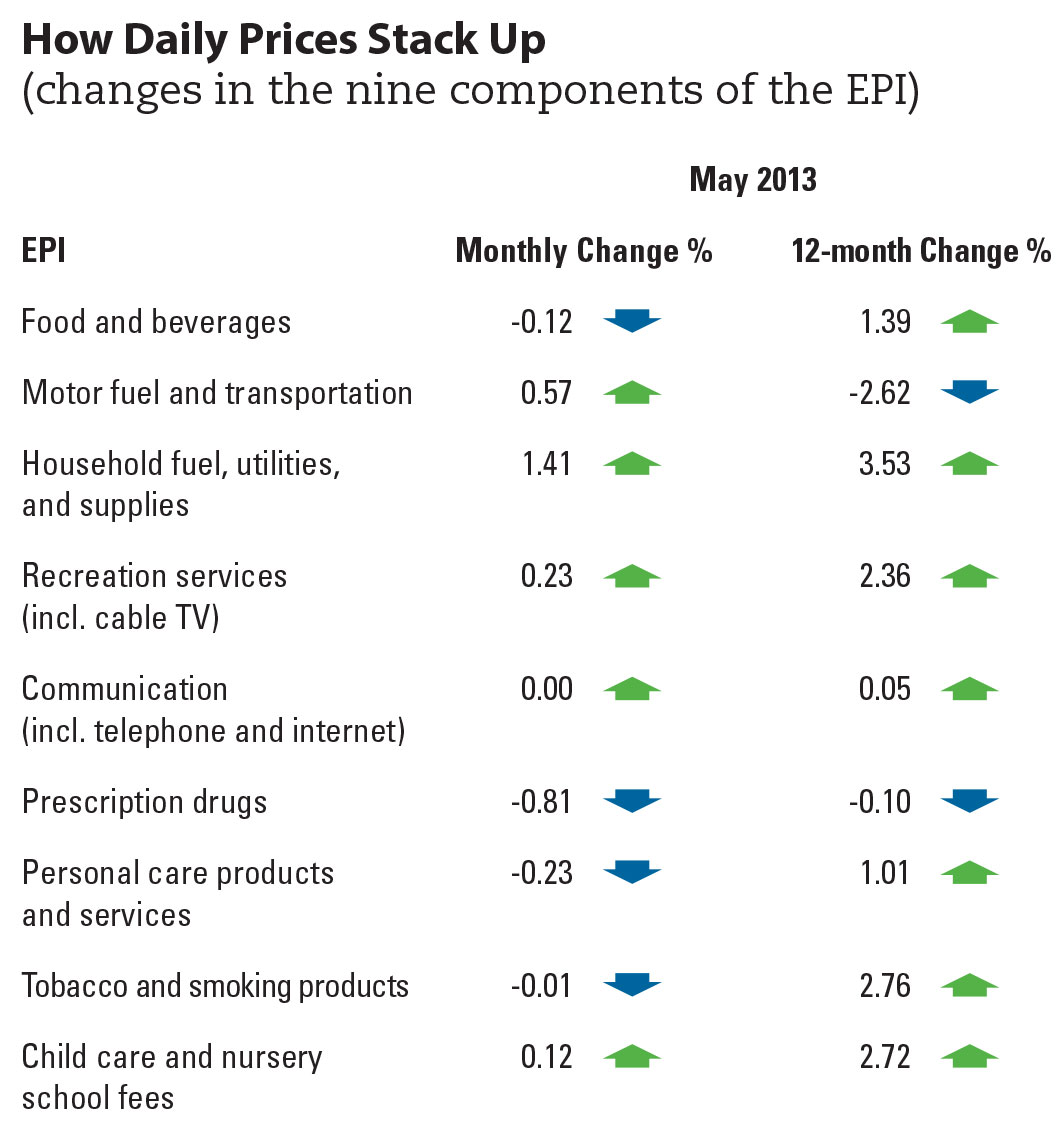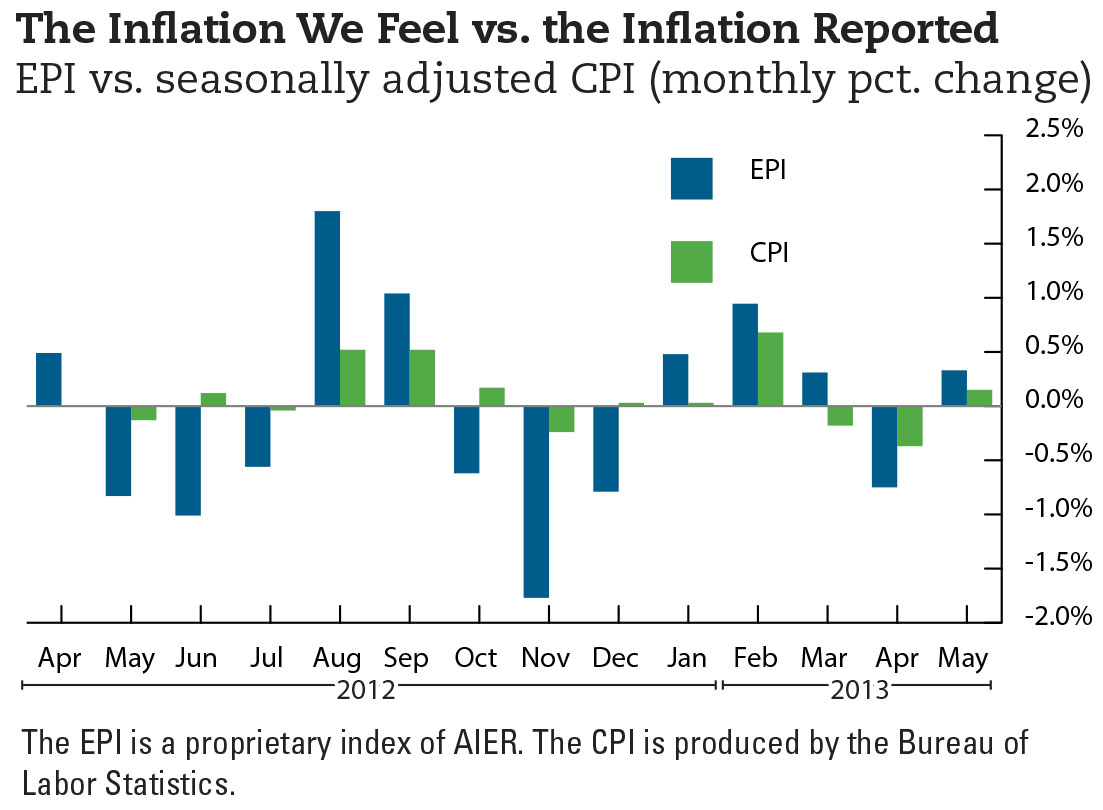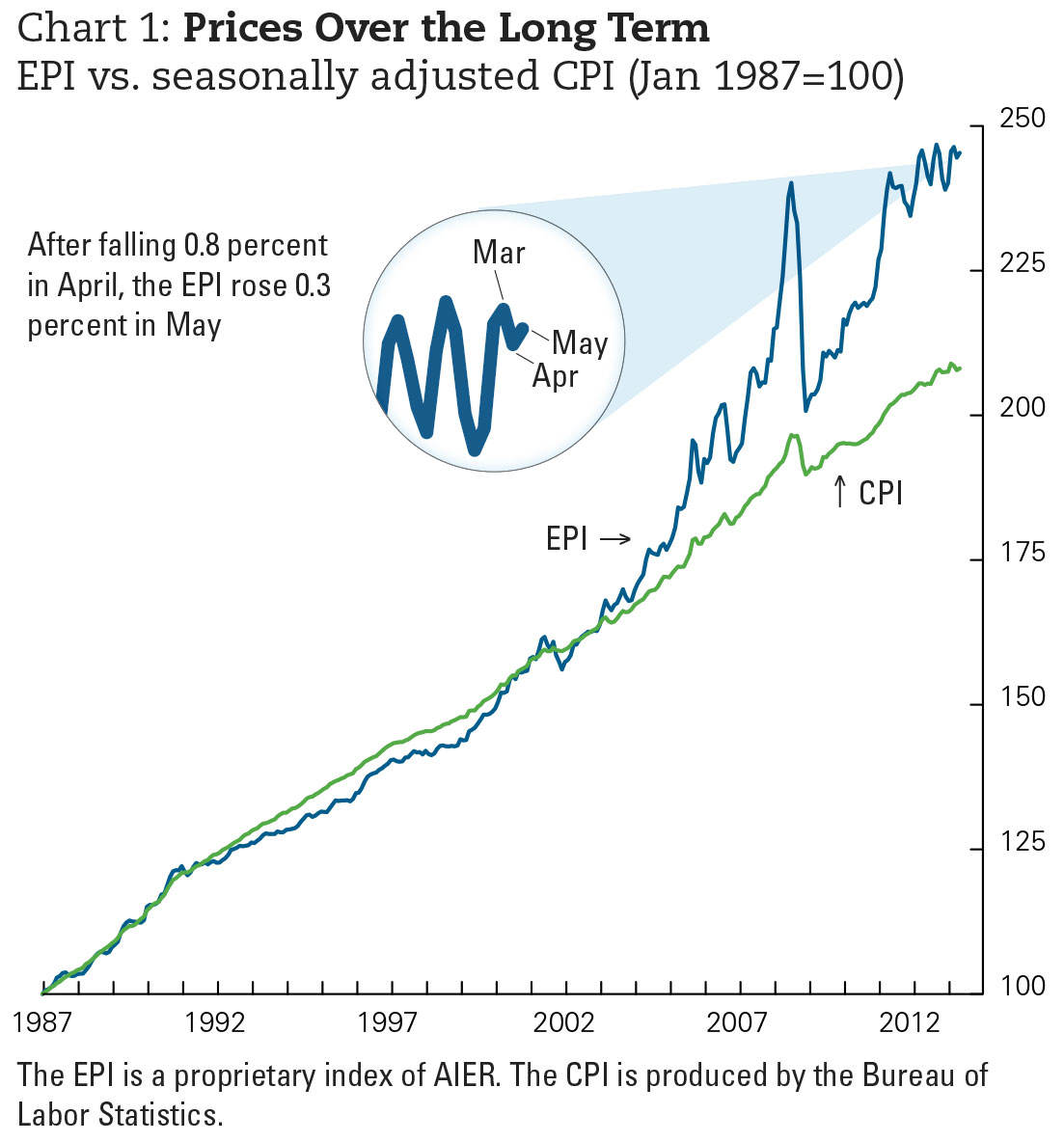Everyday Prices Heat Up
Household fuel and utilities, which rose 1.4 percent in May, drove the EPI’s climb. Prices in this category typically surge during the spring and summer as Americans use more electricity to cool off their homes. Electricity prices should peak over the next few months and begin to dwindle in the fall.
Refineries are also coming back to full utilization after closing for standard maintenance repairs in the spring. All this will keep the Brent Crude oil spot price lower than it was at this time last year. At press time, regular gasoline price is $3.63 per gallon, equivalent to the average price from last month.
While energy prices went up in May, the prices of most everyday consumer products continued to soften. Prescription drugs fell 0.8 percent, while personal care products decreased 0.5 percent. Falling import prices helped propel this decline. (See AIER’s June Inflation Report.) American manufacturers are reluctant to charge more for consumer goods if it would mean losing business to foreign producers.
The service sector is less vulnerable to import prices. Personal care services were unchanged last month, and the price of food consumed away from home increased 0.2 percent.
While normal seasonal inflation drove much of the EPI’s upswing in May, its 0.7 percent increase over the past 12 months suggests that broad-based inflationary pressures are also at work. The CPI, which places more weight on housing prices, rose 1.4 percent over the past 12 months.
About the EPI
AIER’s Everyday Price Index (EPI) measures the changing prices of frequently purchased items like food and utilities. We do this by selecting the prices of goods and services from the thousands collected monthly by the Bureau of Labor Statistics in computing its Consumer Price Index. The EPI basket contains only prices of goods and services that Americans typically buy at least once a month, excluding contractually fixed purchases such as mortgages. Our staff economists weight each EPI category in proportion to its share of Americans’ average monthly expenditures. In order to better reflect the out-of-pocket prices that consumers experience on a daily basis, the EPI does not seasonally adjust prices.








